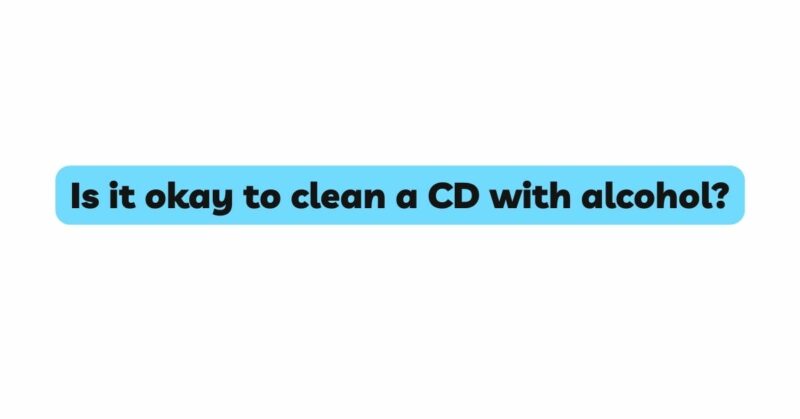In an age where digital media dominates, CDs (Compact Discs) continue to hold their ground as a tangible and nostalgic form of content distribution. However, the longevity of CDs can be compromised by accumulated dust, fingerprints, and smudges, leading many to consider cleaning methods to restore their playback quality. One common suggestion that has circulated for years is the use of alcohol for cleaning CDs. In this article, we delve into the science behind CD composition, examine the benefits and drawbacks of using alcohol for cleaning, and explore alternative methods that might offer safer solutions.
Understanding CD Composition
Before discussing the merits and potential pitfalls of cleaning CDs with alcohol, it’s essential to understand the composition of a CD. A standard CD consists of a polycarbonate layer, a reflective layer (often made of aluminum), and a protective layer of lacquer. The data, in the form of microscopic pits, is encoded on the polycarbonate layer’s underside. Over time, exposure to environmental factors can lead to surface contamination, affecting the CD’s read accuracy and playback quality.
Benefits of Using Alcohol for Cleaning CDs
- Effective in Removing Contaminants: Alcohol, particularly isopropyl alcohol (IPA), is known for its ability to dissolve oils, dirt, and fingerprints that may accumulate on a CD’s surface. When applied correctly, it can effectively remove these contaminants, potentially enhancing the CD’s playback quality.
- Quick Evaporation: Alcohol evaporates rapidly, reducing the risk of liquid seeping into the CD’s layers and causing damage. This property is crucial in preventing potential harm to the CD’s data storage and reflective layers.
Drawbacks and Risks
- Potential for Damage: Despite its benefits, alcohol also poses significant risks when used to clean CDs. The solvent properties of alcohol can interact with the protective lacquer layer, causing it to degrade over time. This can lead to delamination, where the layers of the CD separate, irreversibly damaging the disc.
- Erosion of Printed Labels: If the CD has a printed label on its surface, alcohol can erode the ink or design. This can result in the label becoming faded, smeared, or even removed entirely.
- Ineffective Against Deep Scratches: Alcohol can do little to repair deep scratches on the CD’s surface, which may still affect playback quality. Attempting to clean or repair such scratches with alcohol might worsen the situation.
Alternatives to Alcohol Cleaning
- Microfiber Cloth: A gentle microfiber cloth is a non-abrasive option to remove surface contaminants from CDs. It’s less likely to cause damage compared to alcohol and is particularly effective for removing dust and fingerprints.
- Commercial CD Cleaners: Various commercially available CD cleaning solutions are specifically designed to clean and maintain CDs without causing damage. These solutions are formulated to be safe for CDs’ delicate components.
- Distilled Water: In some cases, distilled water can be used in combination with a microfiber cloth to gently clean the CD’s surface. However, this method should be used sparingly and with caution.
Best Practices for Cleaning CDs
Regardless of the method chosen, several best practices can help ensure the safe and effective cleaning of CDs:
- Gentleness: Always be gentle when cleaning CDs. Applying excessive pressure can lead to scratches or other forms of damage.
- Radial Motion: When cleaning, use radial motions from the center to the edge of the CD. This reduces the risk of pushing contaminants into the data layer.
- Test in a Small Area: Before applying any cleaning solution, test it on a small, inconspicuous area of the CD to ensure it doesn’t cause damage or adverse effects.
Conclusion
Cleaning CDs with alcohol can be effective in removing surface contaminants, but it also comes with inherent risks that can potentially damage the disc. The delicate nature of CDs, with their multiple layers and microscopic data storage, requires careful consideration when selecting a cleaning method. While alcohol may offer a quick fix, safer alternatives like microfiber cloths, commercial CD cleaners, and distilled water should be explored to maintain the longevity and quality of these cherished physical media. Remember, the ultimate goal is to enhance playback quality without jeopardizing the CD’s integrity.

